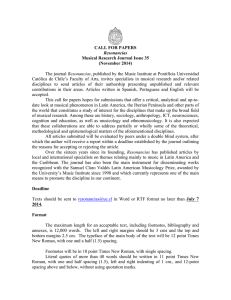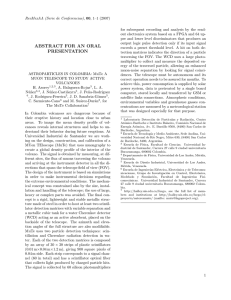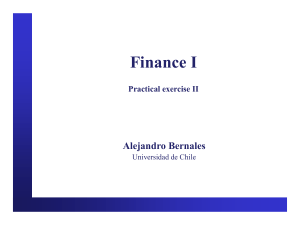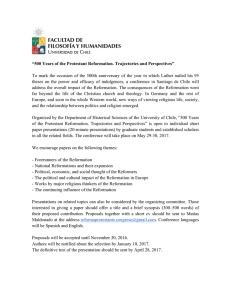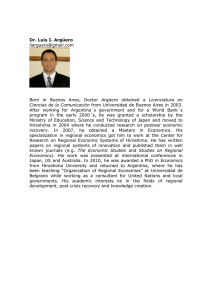Universal Behavior of Extreme Price Movements in Stock Markets
Anuncio
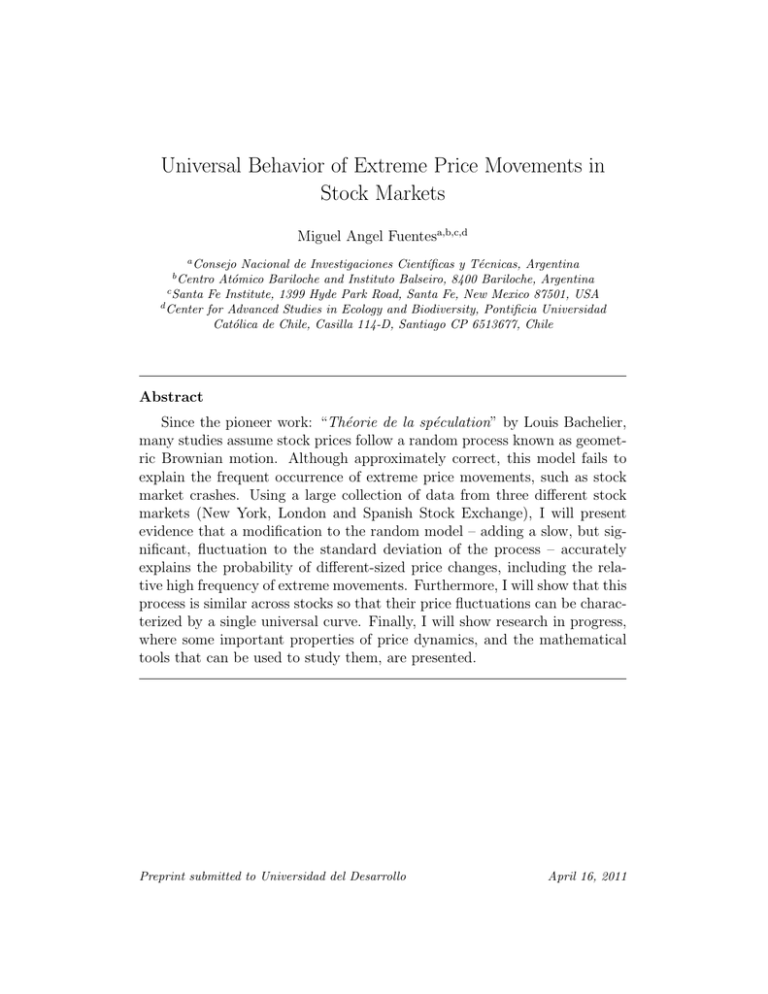
Universal Behavior of Extreme Price Movements in Stock Markets Miguel Angel Fuentesa,b,c,d a Consejo Nacional de Investigaciones Cientı́ficas y Técnicas, Argentina Centro Atómico Bariloche and Instituto Balseiro, 8400 Bariloche, Argentina c Santa Fe Institute, 1399 Hyde Park Road, Santa Fe, New Mexico 87501, USA d Center for Advanced Studies in Ecology and Biodiversity, Pontificia Universidad Católica de Chile, Casilla 114-D, Santiago CP 6513677, Chile b Abstract Since the pioneer work: “Théorie de la spéculation” by Louis Bachelier, many studies assume stock prices follow a random process known as geometric Brownian motion. Although approximately correct, this model fails to explain the frequent occurrence of extreme price movements, such as stock market crashes. Using a large collection of data from three different stock markets (New York, London and Spanish Stock Exchange), I will present evidence that a modification to the random model – adding a slow, but significant, fluctuation to the standard deviation of the process – accurately explains the probability of different-sized price changes, including the relative high frequency of extreme movements. Furthermore, I will show that this process is similar across stocks so that their price fluctuations can be characterized by a single universal curve. Finally, I will show research in progress, where some important properties of price dynamics, and the mathematical tools that can be used to study them, are presented. Preprint submitted to Universidad del Desarrollo April 16, 2011



